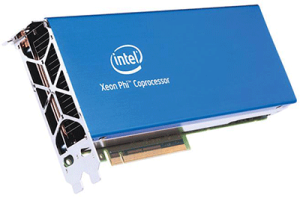 As the use of coprocessors increases to speedup HPC applications, it is important to understand how much additional power the coprocessors use. With various measurements and benchmarks arising to calculate the power used during the running of compute and data intensive applications, measuring the power draw from an Intel Xeon Phi coprocessor is important to understanding the best use of resources.
As the use of coprocessors increases to speedup HPC applications, it is important to understand how much additional power the coprocessors use. With various measurements and benchmarks arising to calculate the power used during the running of compute and data intensive applications, measuring the power draw from an Intel Xeon Phi coprocessor is important to understanding the best use of resources.
The coprocessor utilizes a microcontroller on the board itself , called the System Management Controller (SMC). The SMC monitors the power draw and thermal sensors on various locations of the board. In addition, the SMC manages the fan speed. Intel offers software, the Intel MPSS micsmc tool which allows administrators to monitor many aspects of the coprocessor board.
The micsmc tool has various options to show power draw per coprocessor in the system, and the temperature profiles of each coprocessor. An interesting feature is to be able to monitor the air temperature before and after the fan in the system, to determine optimum fan speed settings. Since the micsmc utility is running on the nodes, scripts can be created and run to view the sensor readings over time, and when HPC loads are being run to understand the load these applications place on the overall system. Plots of the power over time can be created from the logging scripts.
In real world applications, the coprocessor is probably not used 100 % of the time. To make a clearer view of the performance/watt, the power log would have to be filtered to throw away or ignore the values when the coprocessor is not being used for SIMD portions of the application.
There are other methods to determine the power usage of the Intel Xeon Phi coprocessor as well. A hardware based solution can provide very high data sample rates with very high accuracy. With the software method using the Intel micsmc utility, meaningful results can be obtained without intruding on the coprocessor itself. The threads on the compute node and the coprocessor can continue to do the work that they were acquired for.
Source: Intel Corporation, USA




